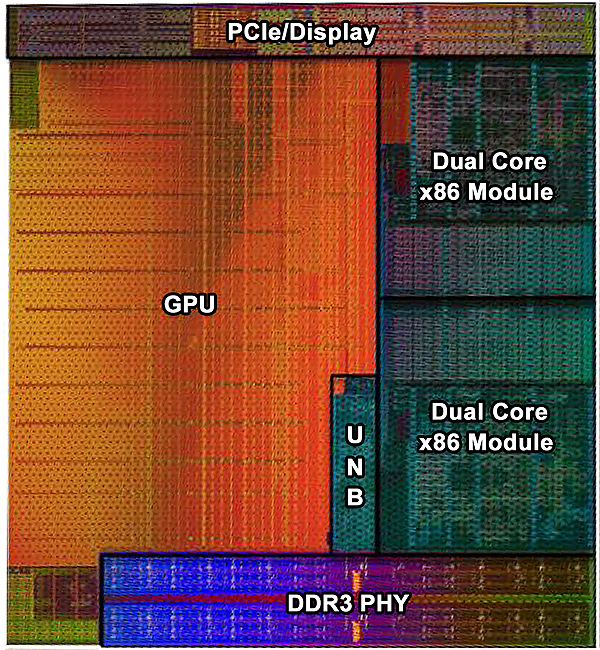AMD FX-7600P Kaveri Review: FX Rides Again...In A Mobile APU?
AMD's Next-Generation APU Hits Notebooks
Six months ago, AMD introduced its Kaveri APU design to the desktop market. It represented a lot of firsts for the company. For instance, it was the first processor to feature what AMD calls a truly Heterogeneous System Architecture (HSA). Its x86 execution cores are the first to leverage the Steamroller architecture, replacing the Piledriver design leveraged in both Trinity and Richland. Kaveri is also the first desktop APU armed with AMD's Graphics Core Next (GCN) architecture, featuring many of the same building blocks at the heart of today's discrete Radeon graphics cards, offering TrueAudio functionality and support for AMD's Mantle graphics API.
On paper, and in practice, Kaveri is a compelling mainstream, budget-oriented SoC. You can read more about it in our launch coverage: AMD A10-7850K And A8-7600: Kaveri Gives Us A Taste Of HSA.
Unfortunately, the APU's life in the desktop space isn't easy. Kaveri is intended to operate within a broad range, from 15 to 95 W. AMD has already talked about sweet spots inside of that thermal envelope; right from the start, company representatives said this design does its best work at TDPs under 45 watts.
We also know that Kaveri's 28 nm SHP bulk silicon process optimizes density at the expense of higher clock rates, which could be another reason the mobile version proves more capable than anything AMD could enable on the desktop.
Indeed, when it comes to the desktop, the 45 W A8-7600 (an APU that we reviewed in January, but is still not available to purchase, by the way), serves up performance results that look impressive compared to the 95 W A10-7850K. In other words, you get relatively little extra in the benchmarks for the 50 W-higher power ceiling. In fact, in many cases, the Kaveri-based A10-7850K barely improves on the previous-generation A10-6800K, which offers more overclocking headroom thanks to its 32 nm SOI process.
Yes, Kaveri's Steamroller-based cores do get more work done per clock cycle than Piledriver. However, the architecture's advantages are largely masked by lower clock rates at comparable power levels. When the playing field is normalized by battery power, though, AMD says its modern APU design is at its best.
And so we now have fairly aggressive expectations, shaped by AMD's triumphant marketing message. At the end of the day, though, engineering has to live up to the PR team's promises. It's time to determine whether practice lives up to theory.
Get Tom's Hardware's best news and in-depth reviews, straight to your inbox.
Current page: AMD's Next-Generation APU Hits Notebooks
Next Page Mobilizing Kaveri: The Product StackDon Woligroski was a former senior hardware editor for Tom's Hardware. He has covered a wide range of PC hardware topics, including CPUs, GPUs, system building, and emerging technologies.
-
damric Reply13432106 said:Are we ever going to get some new CPUs for the AM3+ socket?
I sure hope not. North Bridges and HT Link are so 5 years ago.
-
Lord_Kitty 20% IPC boost with Steamroller? (First page, second picture)Reply
That's enough for their 8-core chips to catch up or surpass current i5s, right? -
roymustang Rather than posting what we already know will be crappy framerates of recent games I wish that when outlets reviewed iGPUs they used some old games to see how those would run. Nobody buys a mobile APU expecting to use it for Battlefield 4. But people do like running older games on their APUs because those will most likely run decently. It would be nice to see how something like Final Fantasy XI or Knights of the Old Republic would run on this. Final Fantasy XI even has a benchmarking tool called Vana'diel Bench 3.Reply -
Amdlova 45w tdp on notebook. i think will we see some 17" + notebooks. don't put on your legs or you fry it!Reply -
Sakkura Reply
I agree, though it still makes sense to keep one demanding game in the test suite to give perspective on where this hardware stands compared to dedicated graphics cards and high-end CPUs.13432397 said:Rather than posting what we already know will be crappy framerates of recent games I wish that when outlets reviewed iGPUs they used some old games to see how those would run. Nobody buys a mobile APU expecting to use it for Battlefield 4. But people do like running older games on their APUs because those will most likely run decently. It would be nice to see how something like Final Fantasy XI or Knights of the Old Republic would run on this. Final Fantasy XI even has a benchmarking tool called Vana'diel Bench 3. -
Saiki4116 Thanks for including Dota2 Benchmarks. I had experienced FPS drop on my current Laptop(almost dead with i5-450M and HD5470, 1366*768, 4GB RAM) due to overheating, I tried to reduce resolution and tried many configs, but the problem was there.I have let Raptor(AMD 's app) to adjust the profile for Dota2, after that I didn't face the problem.Reply -
mitcoes16 I miss 720p testings that is the resolution a clever player would use with this GPUsReply
1080p and demanding games are not good benchmarks for this GPUs you must use less demanding games or test lower resolutions It is not the same benchmarking F1s than Nascars or electric cars


